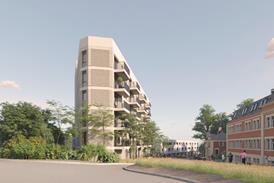First fall since September last year
New figures from the Office for National Statistics (ONS) reveal that construction output fell 0.6% in the three months to the end of April, compared with the same period last year.
The dip, driven mainly by a 0.9% fall in all new work, was the first quarter-on-quarter fall since September last year.
The ONS said construction output also fell month-on-month in April 2017, dropping 1.6%, driven by falls in both repair and maintenance, and all new work.
However the fall in all new work last month was somewhat offset by a sizeable rise in infrastructure, which grew by 5.7% compared with March 2017.
The ONS also revised some its earlier figures. It said that although construction output fell in April, the figure for March had been revised to a growth of 0.7%, having previously been published as a dip of 0.7%.
Figures for January this year had also been revised upwards, from negative 0.1% to 0.3%.
The ONS said: “These revisions have occurred as a result of late data being received, causing upward revisions across all types of work, in particular infrastructure and private housing.”
As a result, growth in construction output for the first three months of 2017 were revised upwards from 0.2% to 1.1%.
Michael Thirkettle, chief executive McBains Cooper, said the decline in output was “a further sign of the current fragility of the construction industry.
“With Brexit in 2019 on the horizon and the uncertainty of what this will mean for new orders, the industry remains concerned about the future,” he said.
“It also remains to be seen what the new government will propose in terms of skilled EU migrant workers, because of skills shortages in the industry the construction sector is heavily reliant on highly skilled migrant labour and an exodus of such workers would further stifle any growth and housebuilding targets.
“The new government needs to ensure that housebuilding is at the top of its agenda and give the construction industry the tools to succeed, such as streamlining planning laws and investing in public projects.”













No comments yet